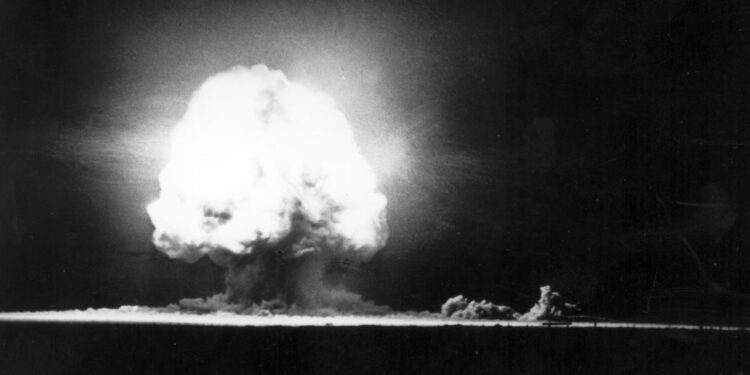On 16 July 1945, at 05:29 local time, the desert near Alamogordo, New Mexico was forever etched into human history. In a remote stretch of land known as the Jornada del Muerto, the United States conducted the world’s first successful test of an atomic bomb under the codename “Trinity”. The event marked the beginning of the nuclear age and ushered in a new era of military power, political tension, and scientific reckoning.
The Trinity test was the culmination of the top-secret Manhattan Project, an immense wartime research programme that brought together some of the most brilliant scientific minds, including physicists Robert Oppenheimer, Enrico Fermi, and Niels Bohr. The goal was to develop a weapon of unprecedented destructive power before Nazi Germany could do the same.
The device tested near Alamogordo was a plutonium implosion bomb—identical in design to the “Fat Man” bomb later dropped on Nagasaki. When detonated, the explosion unleashed a blinding flash, followed by a fireball that rose into the sky, forming a mushroom cloud over 12 kilometres high. The shockwave shattered windows 160 kilometres away. Scientists estimated the force at around 20 kilotons of TNT.
Oppenheimer later reflected on the moment by quoting the Bhagavad Gita: “Now I am become Death, the destroyer of worlds.” His words captured the profound awe and dread felt by those present. While many celebrated the success of the test, it also marked the moral and philosophical fracture point for numerous scientists involved.
Just three weeks later, atomic bombs were dropped on the Japanese cities of Hiroshima and Nagasaki, killing over 100,000 people and leading to Japan’s surrender. The demonstration of atomic capability in New Mexico had shown what the bomb could do; the bombings in Japan showed what it would do in war.
The Trinity explosion signalled more than just victory in World War II—it redefined the geopolitical order. The ensuing Cold War was shaped by nuclear deterrence, arms races, and the haunting prospect of mutually assured destruction.
Today, the site near Alamogordo is part of the White Sands Missile Range and is only open to the public twice a year. It stands not as a celebration, but as a grim monument to a moment when humanity gained the power to annihilate itself.
The first atomic bomb test remains a defining event of the 20th century—a fusion of scientific triumph and existential horror. Its legacy continues to shape military policy, international relations, and the ongoing debate over nuclear proliferation and disarmament.
REFH – newshub finance



Recent Comments